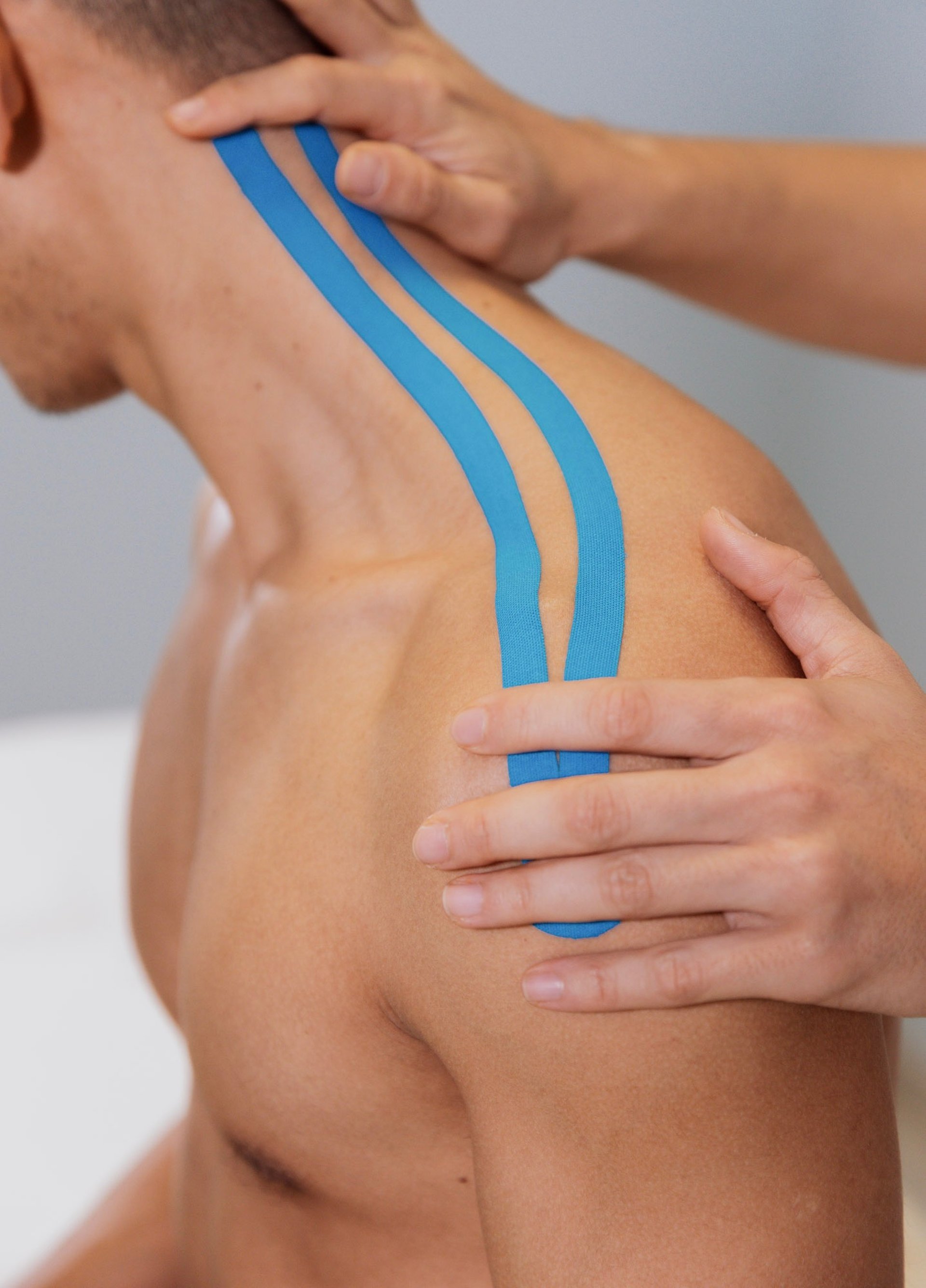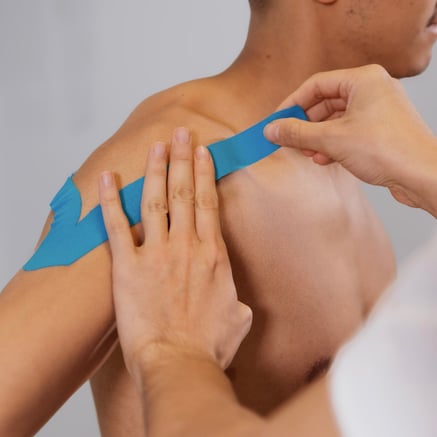
Neuromuscular Taping
NeuroMuscular Taping (NMT) is a technique involving
the application of an elastic adhesive tape on the skin, with direct therapeutic effects locally and reflexively. Proper application can reduce pain and facilitate lymphatic drainage through the formation of skin folds.
Unlike traditional inelastic and elastic taping, NMT focuses on facilitating skin and muscle movements to achieve a therapeutic biomechanical effect on the treated areas. Muscles are one of the primary targets of NMT, with indirect effects on venous and lymphatic circulation and body temperature.
The key characteristics that differentiate NMT from other types of taping and bandaging include:
- Use of a tape with specific characteristics;
- Application method;
- Defined decompressive and compressive taping technique.
The application, combined with body movement, generates micro-movements of the tape that stimulate cutaneous and underlying layer receptors, sending exteroceptive and proprioceptive stimuli to the central nervous system, resulting in a reflex muscle response. By stimulating exteroceptive sensitivity, the tape reduces lymphatic and blood stasis, improves local microcirculation, and allows for the absorption of any edema.
By acting on the skin, muscles, venous system, lymphatic system, and joints, NMT achieves several primary objectives:
- Alleviate pain;
- Normalize muscle tension;
- Remove venous and lymphatic congestion;
- Improve blood vascularization;
- Correct joint alignment;
- Improve postural alignment.
The continuous lymphatic and vascular benefits offered by NMT application can facilitate recovery in post-operative and post-traumatological situations. The tape used for treatment can be applied for multiple days, contains no active ingredients, and can be used on children, adults, the elderly, and pregnant women.



NeuroMuscular Taping (NMT) is a technique involving
the application of an elastic adhesive tape on the skin, with direct therapeutic effects locally and reflexively. Proper application can reduce pain and facilitate lymphatic drainage through the formation of skin folds.
Unlike traditional inelastic and elastic taping, NMT focuses on facilitating skin and muscle movements to achieve a therapeutic biomechanical effect on the treated areas. Muscles are one of the primary targets of NMT, with indirect effects on venous and lymphatic circulation and body temperature.
The key characteristics that differentiate NMT from other types of taping and bandaging include:
- Use of a tape with specific characteristics;
- Application method;
- Defined decompressive and compressive taping technique.
The application, combined with body movement, generates micro-movements of the tape that stimulate cutaneous and underlying layer receptors, sending exteroceptive and proprioceptive stimuli to the central nervous system, resulting in a reflex muscle response. By stimulating exteroceptive sensitivity, the tape reduces lymphatic and blood stasis, improves local microcirculation, and allows for the absorption of any edema.
By acting on the skin, muscles, venous system, lymphatic system, and joints, NMT achieves several primary objectives:
- Alleviate pain;
- Normalize muscle tension;
- Remove venous and lymphatic congestion;
- Improve blood vascularization;
- Correct joint alignment;
- Improve postural alignment.
The continuous lymphatic and vascular benefits offered by NMT application can facilitate recovery in post-operative and post-traumatological situations. The tape used for treatment can be applied for multiple days, contains no active ingredients, and can be used on children, adults, the elderly, and pregnant women.



WRITE US
We're here for you! If you need additional information about our services or want to schedule an appointment, please don't hesitate to contact us. Fill out the form or use our contact details to reach us. We look forward to assisting you on your journey to well-being.


